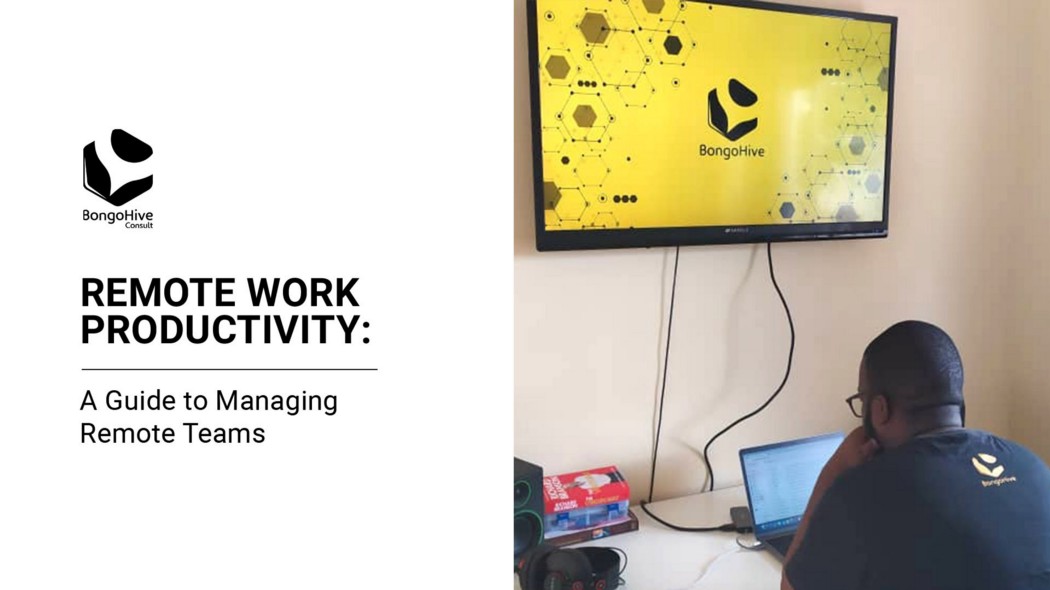
A Guide to Managing Remote Teams
Remote work has now become more than a trend. The uncertain times have necessitated the need for employees to work from home, an activity which is likely to continue even after the pandemic. Managing remote teams is certainly not an easy task. With all the challenges that remote work presents, managers have to go the extra mile to ensure that their teams remain productive. For remote teams to maintain productivity, the right conditions have to be set. These can include a remote work policy, sufficient resources and a proper communication channel. Although you might already have a business continuity plan, in times of rapidly changing circumstances, you might need urgent plans to sail through a crisis like this one.
So then, how can you effectively lead a remote work team by making sure that your employees maintain productivity levels while they also overcome the hurdles of working from home?
Here are some tips you can use.
Communicate effectively
“To be a successful remote manager you need to become diligent about writing clearly and precisely”- A tip from BongoHive Consult Director, Silumesii Maboshe.
Putting in place a channel of communication for your team, is one thing, but communicating effectively is another. Ineffective communication can be a serious hindrance to the way tasks are communicated and interpreted. As a manager, you need to streamline your communication channels to cater for formal and informal communication at the workplace.
Email, which is the primary form of communication for most organisations, might not be sufficient. You can leverage on video conferencing tools like Zoom and Google meet for complex conversations so that your teams can benefit from visual cues. Video communication also provides a personal way of communication and eliminates issues of misinterpretation and misunderstanding.
In circumstances of time-sensitive communication, where visual detail is less important, other communication tools like Slack, Microsoft Teams can be used.
Having an effective communication channel of communication can help you to support your remote work team and maximise their input.
Provide the resources
Equipping your employees with the right resources is imperative in remote working. You need to make sure that your teams have the right digital tools and technology infrastructure for a seamless workflow. It is also important to note that training your employees in using digital tools is essential and can reduce technology rejection. If you want your team to fully engage with the digital collaboration tools that you introduce them to, you will also need to provide a guideline for their use.
Resources like laptops, reliable internet connection and even smart mobile devices are other essential tools that your remote work teams may need. It is your duty as a manager to ensure that your employees have access to them. A workforce that feels supported and empowered by its managers is bound to work effectively, thereby increasing levels of productivity.
Focus on Outcome
Monitoring what your employees are doing during work hours might be difficult and bothersome to your employees but that does not mean that you cannot put in place a mechanism to monitor your employee’s tasks and activities. In this regard, trust and accountability are two important factors. You need to trust that your employees are carrying out their tasks but also, your team has to be accountable for their actions. While it’s important that you track metrics that matter to your organization too much oversight can show employees signs of mistrust. Just because you can’t see your employees working doesn’t mean work isn’t getting done. As a best practice, focus on the results and review them. Silumesii gives another tip:
As a leader, you have to trust your employees, irrespective of if you’re in-person with them or remote. But as a remote leader, that trust becomes even more paramount.
Check-in regularly
As a leader of a remote team, you need to establish a routine for checking up on your teams to ensure that they are meeting targets. You must be aware of your employees’ work schedule and tasks they are expected to accomplish so that you can use the check-ins to inquire on uncompleted tasks and get feedback. Daily meetings might not always be possible, but regularly checking up on your employees either as a team or one-on-one keeps them engaged.
It is not just about how your team is carrying out their tasks and meeting deadlines, check-ins are also for offering encouragement and emotional support. Take the time to listen to your employees’ concerns about working remotely. A simple question like ‘How are you finding remote work’ can give you an oversight of your employees’ fears and gains while they work from home.
Set expectations
From the start, ensure that your team knows and understands what your expectations are. Create realistic expectations that align with your employees’ tasks and keep adjusting them until you find a mechanism that works for both you and your team.
If you would like your employees to give you daily updates on their tasks, you need to make that clear. If you are going to check in with your teams on a weekly or monthly basis, let your team know and always set an agenda.
To make sure that you and your team are synchronised, involve them in the managing process and get constant feedback.
We have guided organisations with a step by step process of managing remote work productivity and we have also helped them to set up a remote work policy. If you would also like to be guided on managing your remote team, contact us!
 BongoHive
BongoHive